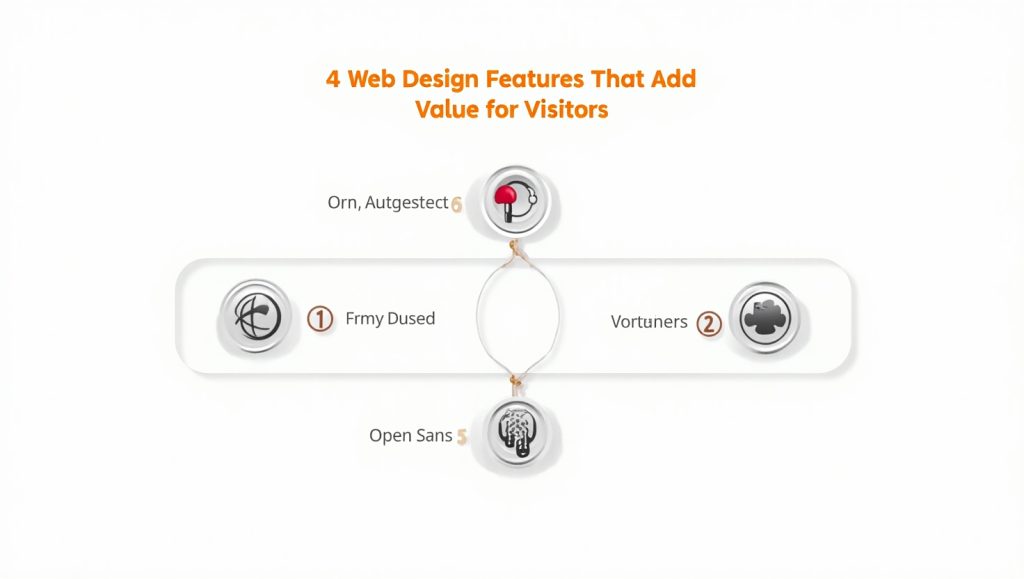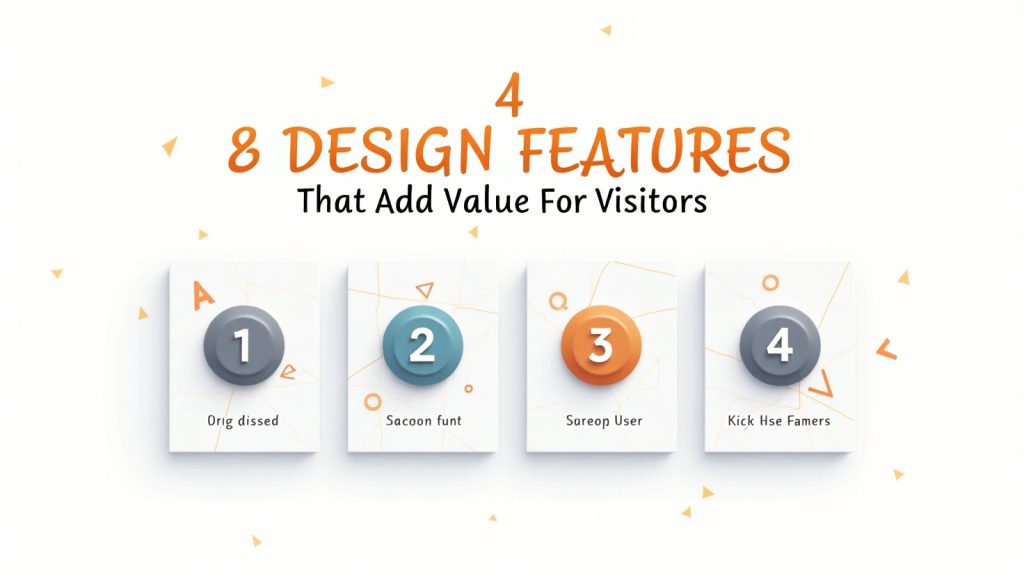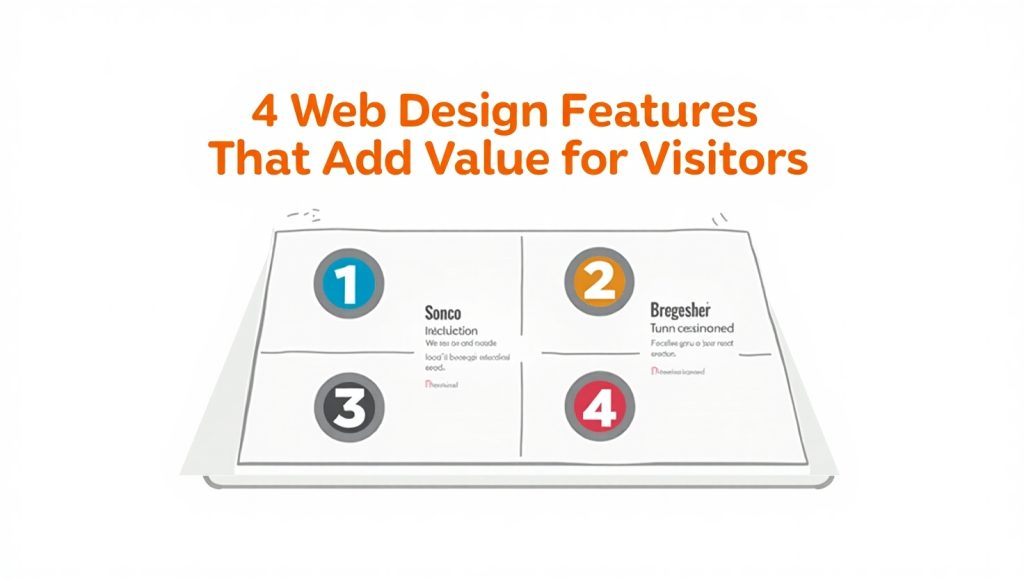
1. Fast Loading Speed Keeps Visitors Engaged
Speed of a website is the first impression. Visitors will notice when a website is very slow. Today, a person doesn’t want to wait even a few seconds for a page to load on the web. If it takes a lot of time, then the user will not pay much attention and click away. This is the reason why fast loading speed isn’t just a feature but adds to the entire experience of users on your site.
With a speedier site, they tend to stay on longer, are more likely to visit more pages, and are more likely to convert—fill out a form, purchase, read a blog—all of those things. Google loves speed too; no surprise. It’s one of the things that the search engine uses to rank your site, which means that with the speedier website, you’re probably going to get better visibility.
When designing a website, pay attention to the size of images, use efficient code, and make sure that you host your website by a capable provider that can deal with your traffic. There are several small improvements, such as file compression, or a content delivery network (CDN) implementation, which will save several seconds in loading time. In web design, seconds count.
Want to see the difference for yourself? While there are many other services that need to be paid for, PageSpeed Insights offers real-time feedback on where you can improve to make it fast and user-friendly. It is a simple means to improve both visitor satisfaction and SEO.
The Role of Mobile Optimization in Speed
Mobile optimization is critical in determining how fast or slow a site feels to users. People browse a lot on their phones, and most likely, if a site is not designed for mobile, it means it’s loading quite slowly. Mobile devices often run on less powerful processors and slower data connections as compared to desktops. So when it comes to the mobile experience, nothing short of optimization is required.
A mobile-optimized site is responsive, which means its layout responds according to screen size. It avoids using unnecessary heavy scripts and reduces image sizes for mobile screens while focusing on above-the-fold content. This ensures that what the user sees first loads quickly, helping the user to stay on-site without bouncing.
Mobile users expect the sites to load as quickly as on a desktop. If the site lags and takes longer than a couple of seconds to show up, the bounce rate will shoot through the roof. Google notices this too, and mobile speed and friendliness are components of Google’s ranking algorithm.
So while working on speed, don’t simply concern yourself with desktop performance. Test how your website behaves on smartphones and tablets. It’s a necessity now, not a luxury.
2. Clear Navigation That Makes Browsing Easy

Mobile optimization plays a key role in how fast or slow a website feels for their users. People are doing a lot of browsing on their phones, and if a site is not optimized for mobile, it is most probably quite slow to load. Mobile devices generally possess slower computing power and have poor data connections compared to desktops, making optimization of utmost importance in mobile experience.
A mobile-optimized site is responsive, meaning its layout depends on the size of the screen. It shuns any heavy scripts and ensures mobile screen images are kept to a minimum size, with a focus set on above-the-fold content. This guarantees that what users first see is quickly loaded so that they can remain on the page and not fall off.
There is an expectation from mobile users that sites will load as quickly as on a desktop. Once the site lags and takes more than a couple of seconds to appear, the bounce rate will surely be through the roof. Google is taking note as well, so mobile speed and usability certainly make up some of the parameters in its ranking algorithm.
So when you’re working on speed, make sure that you are not only looking at performance on desktop. Test the mobile and tablet experience. Today, it is a necessity, not a luxury.
How Intuitive Menus Improve User Experience
Menus form the core of any navigation system, and when intuitive, users will not think for a second as to where to click. The main objective is to make it feel effortless to find information. For instance, instead of hiding your pricing info three menus deep, let’s unlock it straight from the homepage.
Sticky headers—that stay on top of the page when the user scrolls—are another great way to keep menus readily available. This is particularly helpful on lengthy pages or while users read blog articles. Another good alternative would be a search bar to suit the users who prefer to type rather than to click through the menus.
Intuitive menus also bring great advantage in terms of accessibility. When navigation is clearly laid out via semantic HTML and ARIA labels, screen readers work much better to guide visually impaired users. So it is not just nice to have clean codes; the codes must also be inclusive.
Always test menus with real users or A/B test the configurations with respect to layout. Even the smallest changes—in wording menu labels or redesigning how pages are set up—can lead to great improvements in how people experience your site.
3. Strong Visual Hierarchy Guides Attention
Visual hierarchy concerns how design elements are organized so as to direct the visitor’s gaze. When executed well, it enables a site to be read at a glance, and otherwise, it creates mess and makes people skip vital information.
Your website is like a newspaper: headlines are bold, sub-headings are a tad smaller, and body text is the lightest. The same goes for web design. Use more prominent font sizes, contrasting colors, ample spacing, decorative images, and everything else that expresses what is of prime importance on a page. Bold text such as “Call to Action” (i.e., “Get a Free Quote”) should be an explicit departure from the rest of the content.
Another trick is to engage whitespace. Don’t pack a section with too much information. Let the content breathe so that each element may receive due attention.
Visitors who can easily seek what they are after and know what is essential on the page will tend to stay, read, and participate. It is at this point that your website converts from being a mere digital brochure into a results-driven instrument.
Using Typography and Color to Highlight Key Elements
Visual hierarchy is created primarily through the use of typography and color. In sizing, weight, and style, your fonts speak of what is most important. Typically, your headline should be large and bold, while body text is easy to read but less dominant in feel.
Color also helps to draw attention. Active buttons should shout contrast and be visible against the background. Just don’t overdo the brightness; too many neon colors at the same time will scream at the user, thereby taking away clarity.
But everything needs to be consistent. Use a defined style guide for headings, subheadings, links, and body text all over the site. This does make it cleaner. It also helps the visitor quickly recognize the patterns and understand the layout of your site.
Also, use color as an indicator of interactivity. Links should change color on hover, and buttons should provide feedback visually. It is the minor details that make your website appear polished and accessible, which is highly appreciated by your visitors.
4. Engaging and Useful Content Builds Trust

Your design may bring them to your site, but keep them with you with content. Content is actually much more than just words on pages-it’s how you communicate your brand, values, and offerings as well. High-quality content builds trust and keeps people informed, whether it’s blogs, product descriptions or FAQ pages.
That great content connects with people; it talks about audience needs. Don’t only consider what you want to write about; what is there for the visitors? Speak to them in their own language, answer their common questions, and it is so easy and direct to understand advice. The site becomes much more personal and welcoming.
Visuals can also enhance your message: images, videos, and infographics. Nothing explains something as well as a quick tutorial video or before-and-after image; to say it in paragraph forms really isn’t as effective. Just be sure your visuals load quickly and look good on every screen.
Ultimately, it is this good content that serves to keep people on your site longer while acting as a bribe for old customers to become new customers through ensuring they sign up, make purchases, or share your work with others.
Why Updating Content Regularly Matters
Stale content can be damaging for your site. It does undermine credibility of information, but it can also mark your site for search engines as no longer relevant. Regularly updated content shows an active business that cares for what’s going on around it.
However, that does not mean top-to-bottom rewrites every few months! The good news is that even small changes count — like revising statistics, updating images, or patching up readability. You might consider repurposing some older material in a different format to restore relevance; for example, a blog post could become a companion video or downloadable guide.
New examples: Fresh content gives you yet another chance to clinch timely topics and give answers to questions newly raised by your audience. It keeps the SEO pulse of your site going with relevance and authority.
Don’t treat content all the way to the end. Rather, make it a live part of your website. Put in a little more effort on it, and the website will become increasingly valuable to visitors — more and more of whom will convert to loyal customers.